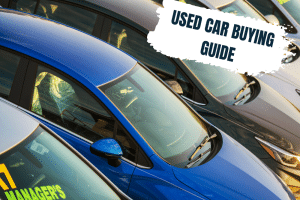
- The Savvy Promise
At Savvy, our mission is to empower you to make informed financial choices. While we maintain stringent editorial standards, this article may include mentions of products offered by our partners. Here’s how we generate income.
Motion sickness can turn a pleasant car ride into a miserable experience. Whether you're prone to motion sickness or have never experienced it before, it can strike unexpectedly and disrupt your journey. In this blog, we'll explore the causes of motion sickness in cars and provide practical tips to prevent and manage it effectively.
What is motion sickness – and why do I get it?
Motion sickness, also known as kinetosis, occurs when there is a disconnect between the signals received by your eyes and inner ear (vestibular system). When you're in a moving vehicle such as a car, your eyes perceive motion while your inner ear senses that you're stationary. This sensory conflict can trigger symptoms like nausea, dizziness, sweating and vomiting.
While the likelihood of getting car sickness varies from person to person, some common factors contribute to its onset:
- Visual confusion: if you're not looking out the window and are instead focusing on a static object inside the car (like your phone screen or a book), your eyes aren't registering the movement you're feeling. This confuses your inner ear, leading to unpleasant sensations.
- Poor ventilation: stale air and strong odours inside the car can worsen nausea and discomfort.
- Bumpy roads: rough terrain and frequent changes in speed and direction can increase the likelihood of motion sickness.
- Individual susceptibility: some people are simply more prone to motion sickness than others. Factors like genetics, age (children are more susceptible), migraines, pregnancy and anxiety can all play a role.
How can I prevent motion sickness?
With a little planning and some proactive strategies, you can reduce your chances of experiencing car sickness. Here are some techniques to try:
- Avoid heavy meals: eating heavy or greasy foods before a car journey can aggravate motion sickness. Opt for light, easily digestible snacks instead.
- Stay hydrated: drink plenty of water to stay hydrated, but avoid excessive consumption of sugary or caffeinated beverages, which can worsen nausea.
- Choose the right seat: sitting in the front seat allows you to see the road ahead and minimise visual confusion. Avoid sitting in the backseat or facing backward if possible.
- Maintain proper ventilation: keep the car well-ventilated by opening windows or using air conditioning to reduce stale air and odours.
- Fix your gaze: focus on a distant object or the horizon to provide visual cues that match the movement of the car. Avoid reading or using electronic devices that require close-up focus.
- Use acupressure bands: wearing acupressure bands on your wrists or using motion sickness relief patches can provide relief by targeting pressure points associated with nausea.
What if I start feeling sick on the journey?
Despite your best efforts, you may still experience motion sickness while travelling in a car. If symptoms occur:
- Take a break: ask the driver to pull over at a safe spot to take a short break. Stepping outside and getting some fresh air can help alleviate symptoms.
- Turn on the air conditioning: cool air can help calm symptoms. Ensure that vents are facing you.
- Practice relaxation techniques: deep breathing exercises, mindfulness meditation or listening to calming music can help reduce stress and anxiety, making motion sickness less severe.
- Chew on ginger: ginger has natural anti-nausea properties. Chewing on crystalised ginger can help settle stomachs. Sucking or chewing on lollies can also help.
- Breathe deeply: when you start to feel queasy, take slow, deep breaths. This can help calm your nerves and reduce nausea.
Can the car I’m in affect motion sickness?
The type of vehicle you’re travelling in could impact motion sickness. Factors such as the size of the vehicle, its suspension system and the smoothness of the ride can all play a role.
- Luxury cars and larger sedans: these may be better for car sickness sufferers due to smoother suspension systems designed to minimise bumps and vibrations, better seats and potentially more spacious interiors.
- Smaller, lighter cars: passengers may be more prone to causing motion sickness due to bumpier rides and potentially less visibility.
- SUVs and trucks: depending on the model, some SUVs might offer a smoother ride – but their higher centre of gravity, which can cause more body roll, could worsen motion sickness for some passengers.
- Electric vehicles: despite their environmental benefits, the high torque at low speeds in electric vehicles can contribute to motion sickness, especially during acceleration.
While the car you are in could have an effect, it’s important to keep in mind that individual sensitivity varies, and some people may still experience motion sickness regardless. Before buying a car, it’s important to do your research to ensure it meets your needs.
With a little planning and the tips outlined above, you can minimise the chances of motion sickness disrupting your next road trip. Remember, the right car can also make a difference! If you're considering buying a new car, Savvy can help make the journey smoother. Our team can compare car loan quotes from a range of lenders to help you find a financing deal to suit your needs. Get started today.
Did you find this page helpful?
This guide provides general information and does not consider your individual needs, finances or objectives. We do not make any recommendation or suggestion about which product is best for you based on your specific situation and we do not compare all companies in the market, or all products offered by all companies. It’s always important to consider whether professional financial, legal or taxation advice is appropriate for you before choosing or purchasing a financial product.
The content on our website is produced by experts in the field of finance and reviewed as part of our editorial guidelines. We endeavour to keep all information across our site updated with accurate information.
Approval for car loans is always subject to our lender’s terms, conditions and qualification criteria. Lenders will undertake a credit check in line with responsible lending obligations to help determine whether you’re in a position to take on the loan you’re applying for.
The interest rate, comparison rate, fees and monthly repayments will depend on factors specific to your profile, such as your financial situation, as well others, such as the loan’s size and your chosen repayment term. Costs such as broker fees, redraw fees or early repayment fees, and cost savings such as fee waivers, aren’t included in the comparison rate but may influence the cost of the loan. Different terms, fees or other loan amounts may result in a different comparison rate.









